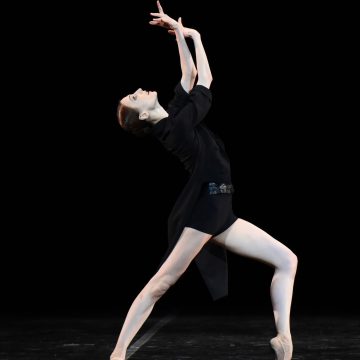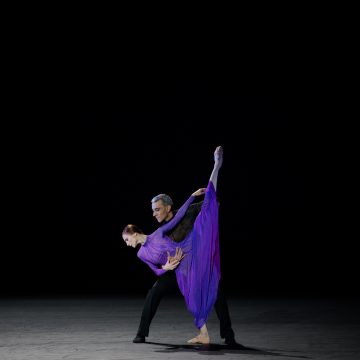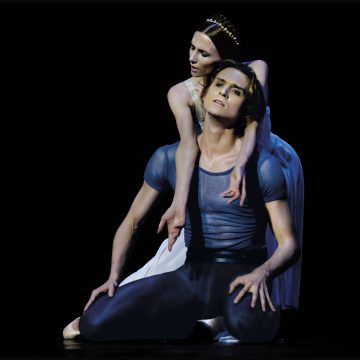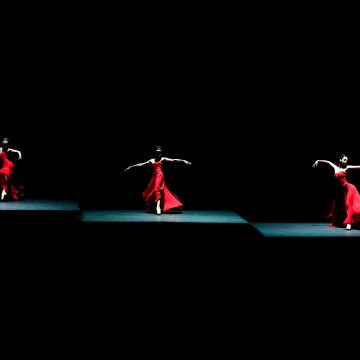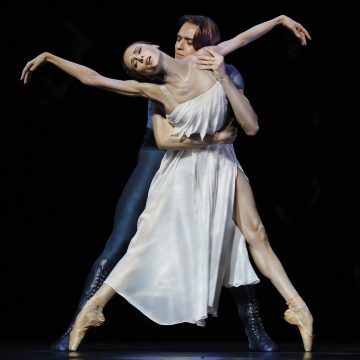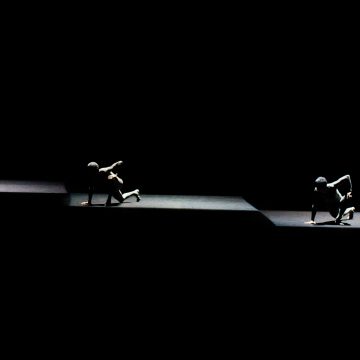Ballet Programme “Amore” featuring Svetlana ZAKHAROVA
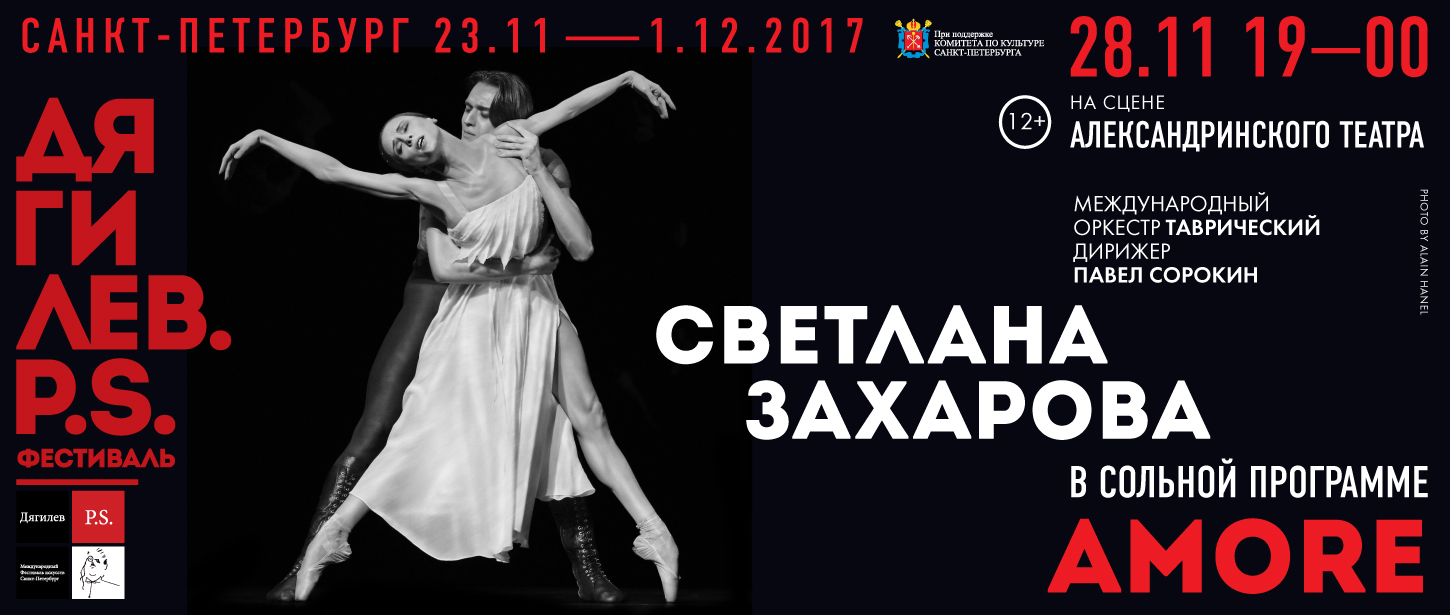
On November 28, Svetlana Zakharova – a prima ballerina of the Bolshoy theatre, a star of the international ballet world will present her triumphant solo programme Amore at the Alexandrinsky theatre, produced by MuzArts:
Francesca da Rimini. Ballet in one act
Pyotr Tchaikovsky
Choreographer: Yuri Posokhov
Costume Designer: Igor Chapurin
Lighting Designer: Sergei Shevchenko
“Love, that exempts no one beloved from loving,
Seized me with pleasure of this man so strongly,
That, as thou seest, it doth not yet desert me”
Dante. Divine Comedy
Tchaikovsky’s 25-minute symphonic poem is based on the story from Dante’s Divine Comedy about tragic love of young Francesca and Paolo. Francesca, the wife of Gianciotto Malatesta, the lord of Rimini, was wedded to him by deceptive means. The lord’s younger brother Paolo comes to Francesca’s house to arrange the wedding instead of the fiancé. Francesca, who mistook Paolo for her fiancé, instantly falls in love with the beautiful young man, but the humpbacked and ugly Gianciotto Malatesta not Paolo becomes her husband. In Gianciotto’s palace, Francesca and Paolo read a book about a sad story of Sir Lancelot’s love and suddenly succumb to mutual passion. The betrayed husband takes the lovers unawares and kills them both. Now Paolo and Francesca are doomed to swirl in the second circle of hell as closely as they are able to touch each other but they will never be together again.
Yuri Possokhov turned to Tchaikovsky’s symphonic poem as he considered it one of the most romantic piece in the history of world music. According to the choreographer, its finale is “like an apocalypse”. “The music of the symphonic poem is so strong that I feared to be unable to find the right approach to it. But it took just three rehearsals to find the right choreographic language”, he told about his worries after he made his choice.
Apart from the main characters of the ballet – Paolo, Francesca and Gianciotto – we also see five waiting ladies, whose dance, according to the director’s intention, is a reflection of Francesca’s emotional experience, and three dancers depicting three shades that crown Rodin’s famous sculpture Gates of Hell. “There is no escape from this music”, as if the choreographer says to his characters, and the gloomy gatemen of hell drag the unfortunate lovers to the underworld.
“I wanted to work with Yuri Possokhov for a long time. Each of his productions is unmatched. The unique, complicated duets are full of drama. Every trait of his stagings is considered, revealing the image and sense of a work… I dawned on me as soon as I heard the first sounds of Tchaikovsky’s music – it’s mine! Possokhov managed to render the entire plot, the entire drama of this famous story in one act. As soon as the artists appear on stage, it’s clear that there will be something between the main characters that they don’t expect. Big feelings and a tragedy. I’m in love with this ballet.”
Svetlana Zakharova
Rain Before It Falls. Ballet in one act
Johann Sebastian Bach, Ottorino Respighi, Carlos Pino Quintana
Scenario: Jean François Vazelle
Choreographer: Patrick de Bana
Costume Designer: Stephanie Boyerli
Lighting Designer: James Angot
“I like the rain before it falls. Of course there is no such thing, she said. That’s why it’s my favorite. Something can still make you happy, can’t it, even if it isn’t real.”
Choreographer Patrick de Bana staged this ballet specially for Svetlana Zakharova. De Bana, a premier danseur of Maurice Béjart’s and Nacho Duato’s companies, also performs one of the parts. His estranged, coldish manner and abstract choreographic pattern helped reveal Svetlana Zakharova’s remarkable plastique in an absolutely unexpected light.
As the duet of Svetlana and Patrick worked on the ballet, the third character performed by Denis Savin joined them.
A room. A woman. Two men. Love. The love triangle. Harmony. Desire. Defeat. Loneliness. Emptiness. The rain before it falls…
“We were interested in infecting the spectator with emotions and the heroine’s internal conflict, and then leave the spectator in solitude, with his personal feelings and emotions.”
Svetlana Zakharova
Strokes Through the Tail. Ballet in one act
Wolfgang Amadeus Mozart
Choreographer: Marguerite Donlon
Costume Designer: Igor Chapurin
Lighting Designer: Andrei Abramov
“What I find particularly fascinating about the ballet Strokes through the Tail is the choreographer’s subtle humour and Mozart’s music. It lacks vulgarity and a hint of parody. Just refined, smart humour, which is difficult to achieve in a dance.”
Svetlana Zakharova
The idea of the ballet was born when Marguerite Donlon learnt that Mozart used a peculiar style of musical notation when he composed his 40th symphony – he crossed out the tails of the notes so that the performers were able to choose their duration to their liking.
“And any freedom in art is a great thing!”
Marguerite Donlon
“At first I saw the characters as little black notes dancing in a white space. When I started to work with the dancers, the notes started to gain personality. Each performer could make his or her own contribution, and that is why the notes were becoming unique, each having its own character.”
Five men and one very lucky woman. All dispute the pas, each imagines himself the brightest! Most original! Most unexpected! But here comes someone who is essentially new, original, unique… Admiring his ingenuity, ALL are trying to excel HIM in innovation… But they can’t overtake or excel the ever changing life…
This mess of catch-up play and leadership dispute is so funny and ridiculous… Really funny… because the author of the ballet looks at his characters as if they’re little kids, with indulgence and fondness.
“What did I want? I wanted to gambol a little, to make fun. I wanted the spectators to leave after the performance in easy, light, high spirits…”
“I’ve never analyzed what it’s all about… Perhaps you’ll see it yourselves?” Marguerite Donlon
With support of Delzell Foundation
